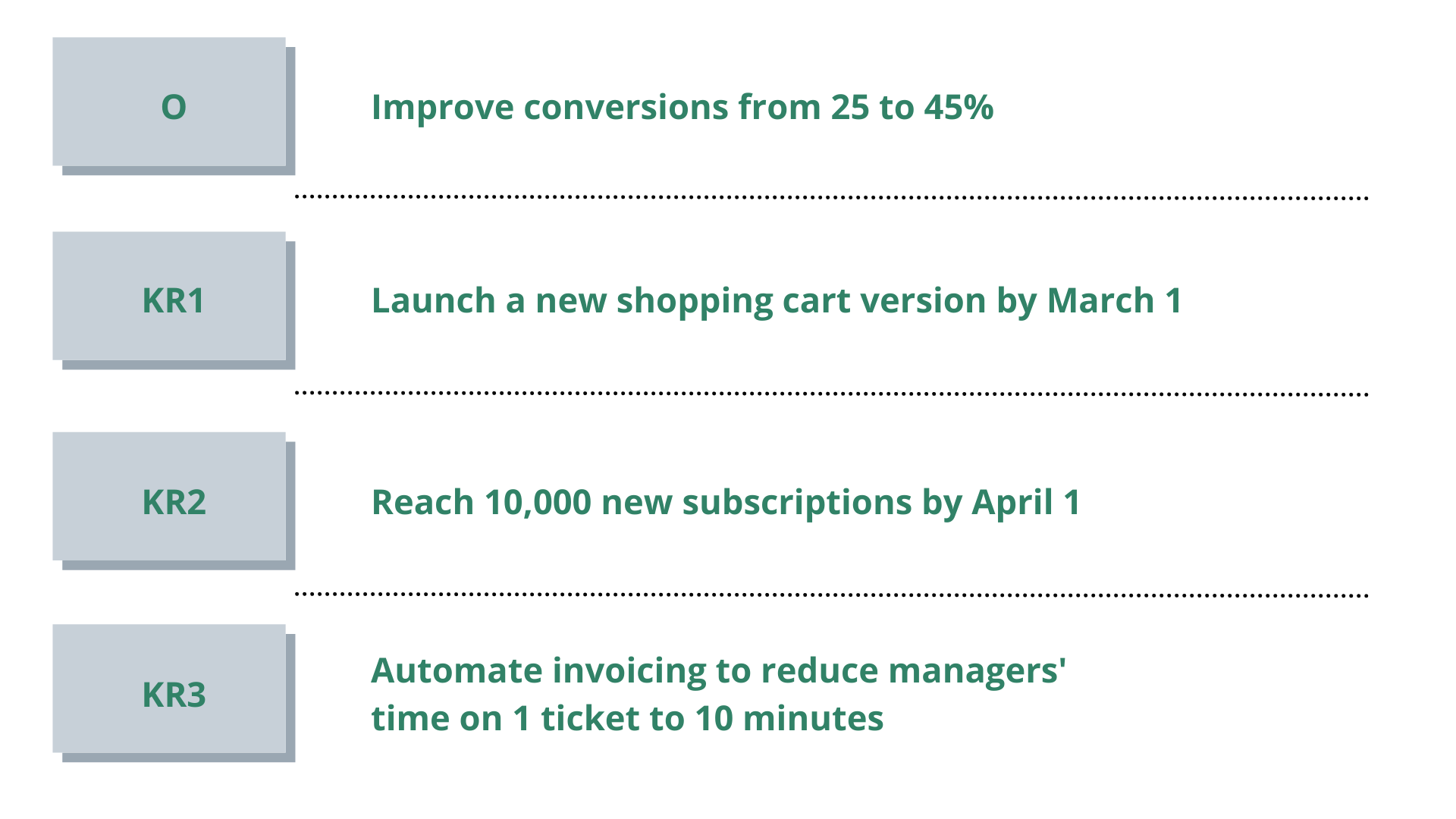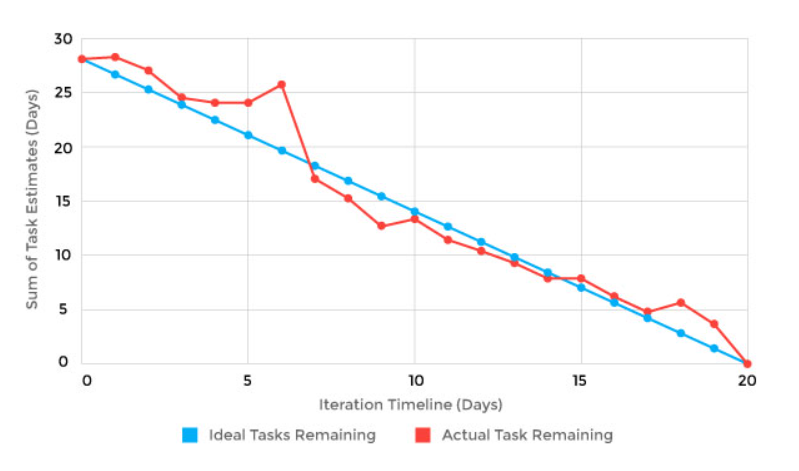A business is 1.9 times more likely to show above-median financial performance in case you have a top team working to achieve a common goal. In this post, we've collected 5 best practices that have proven their worth in helping every leader and manager build a high-performance team for software development that will contribute to fast sustainable business growth.
What is a high-performance team?
A high-performance team is a group of people who collaborate and produce outstanding, consistent results.
High-performance teams meet goals with little management oversight. They can decide and feel strongly accountable for results.
"Investors in start-ups often value the quality of the team and the interaction of the founding members more than the idea itself."
McKinsey & Company
Characteristics of High-Performance Teams
The global and most impactful HR society SHRM declares that in order to create effective software development teams, managers and business leaders should develop the following characteristics within their teams. Let's outline the core ones:
- clearly defined and measurable objectives
- determined operating rules
- a performant and respected leader
- transparent communication
- the diversity of expertise
5 best practices to follow for building a high-performance development team
Alex Kom, Business Development Director at Belitsoft with 14+ years of expertise, comments:
"An experienced vendor is capable of building a solid team and eliminating common bottlenecks. Years of practice lead to this knowledge. Let us consider Belitsoft. For 17+ years, we’ve been building and managing dedicated software development teams for businesses from startups to global corporations. With our substantial understanding and skill set, we can suggest 5 best practices that will aid in developing team characteristics."

Best practice #1: Set clear and measurable software development team goals.
Team members work better when their goals are clear. So each member must understand what and why they are doing it.
You can measure software development team goals using 3 different methods:
Method 1. Setting SMART goals.
According to a S.M.A.R.T. way to define management goals, the objectives should be:
|
Specific |
Narrow down your goal to target a specific area. |
|
Measurable |
Determine progress indicators. |
|
Attainable |
Specify who will accomplish a goal and in what time frame. |
|
Realistic |
Align your goal with resources. |
|
Time-related |
Establish a reasonable deadline. |
Example: Follow test-driven development (TDD), achieving ~85% code coverage writing 300+ unit tests with JUnit in 1 month.
Just for information, Apple uses SMART goals in its marketing plan.
Method 2. Objectives and Key Results (OKR)
OKR is a collaborative method for setting goals hierarchically:
Level 1. Company objectives.
Level 2. Team objectives.
Level 3. Individual objectives
OKR improves communication between departments and decentralizes decision-making, favoring the creativity and pro-activeness of employees.
The successful companies that use OKR are Google, Amazon, Twitter, Netflix, Uber, and Adobe.
OKRs are written with an Objective and 3 to 5 supporting Key Results.
 Example of applying OKRs for setting software development team goals
Example of applying OKRs for setting software development team goals
Method 3. Agile Metrics: 4 KPI for a software development team
Agile metrics help team leaders keep performance in check by measuring different aspects of project development. Agile metrics focus on continuous improvement.
Based on his rich experience, the certified team coach Joel Bancroft-Connors defines 4 metrics to track for creating the best software development teams:
- Cycle Time. It reflects Productivity - getting more done having the same time or resources
- Escaped Defect Rate. It's related to Quality - creating a product free of defects or issues.
- Planned-to-Done Ratio. Aligning plans and deliveries creates Predictability.
- Happiness Metric. Stability maintains the same pace indefinitely.
 Example of applying agile metrics for aligning plans to deliveries (Predictability)
Example of applying agile metrics for aligning plans to deliveries (Predictability)
Best practice #2: Determine operating rules for your team.
Operating rules are business rules, guidelines, policies, norms, and regulations within a company.
Each team member has to actually discuss and agree to follow the operating rules.
Here is a checklist for your team's operating rules:
Does Your Team Have?
- Clear roles and responsibilities within a team
- Well-defined workflow and principles of working together
- Documented procedures for how to handle issues and conflicts
- Clear expectations between developers and project stakeholders
- Focus on a result and an agreed-upon “definition of done” for each step
- Regular performance assessment
- Team success recognition
Keep working until you get positive answers.
Best practice #3: Become or choose a performant and respected leader for a team.
A leader of esteemed reputation and capability is the one who can
- keep the goals relevant and meaningful
- ensure that software development team members constantly enhance their skills
- manage relationships to remove obstacles that might hinder group performance
- and do the actual work required.
How to Lead a Software Development Team to Get Superior Results?
- Educate and Mentor. A study by Degreed shows that 69% of employees first turn to their bosses to learn and ask something. By mentoring and educating, companies boost leadership, constant development in their teams, and create a shared value for the organization.
- Engage. Build a strong team spirit where everyone can share their thoughts and concerns. Authorize key team members to drive initiatives. Invite them to join strategic planning meetings.
- Empower. Encourage your team members to act on their own. Outline the boundaries within which your team can decide on their own.
- Innovate. Promote innovation and continuous excellence for building a high-performance team for software development. Take in fresh ideas by arranging regular discussions to spot improvement areas and dedicate time for reviews after every iteration.
Examples of Global Enterprises Leadership Styles
We've gathered examples of how world-known companies build the leadership culture and team management in software development.
- Google. Managers concentrate on sharing leadership, inspiring teams to succeed, and clearing roadblocks. Traditional management is no longer their focus.
- Netflix. Its leaders don't make all the big decisions and control every high-stakes situation. Instead, they lay out the context, so that employees feel empowered and informed to make the judgment call themselves.
- GitLab. Employees get a lot of freedom for the tasks they work on. They call themselves a remote-first company with the workflows built and ready for remote work.
- Facebook. The company has a famous little red book. The major principles described in it are the importance of releasing fast, failing fast, and learning fast.
- Buffer. Transparency comes first. Revenues, employee salaries, diversity stats, and code are public.
Best practice #4: Create small teams with transparent communication.
Team unity requires communication. No goals or plans will be successful unless everyone understands them and can act accordingly.
The challenge is:
Communication increases with larger teams.
An acclaimed business, learning, and skill acquisition expert Josh Kaufman in his bestselling book “The Personal MBA” states:
“If you lead a team of 8+ people, at least 80% of your job will boil down to communicating”.
The solution is:
Keep your team small and autonomous for optimal performance.
“Studies of effective teamwork usually recommend working in groups of three to eight people. Once group size expands above eight, each additional team member requires more investment in communication than they add in productive capacity”. Josh Kaufman
How to Set Up Effective Communication in a Software Development Team?
To improve the efficiency of communication within your team, put into practice:
- Face-to-face interactions via daily standups
- Pair programming using software development team tools
- Retrospectives (assessing past results and processes for future improvement)
- Collaborative communication in person or using online white boarding tools
- A continuous cycle of feedback
- Group chats and calls
- Files sharing
- Video recording and archiving
Best practice #5: A well-thought HR strategy to bring a diversity of expertise to a team.
Teamwork is more effective when skills are complementary.
Here are some tips to construct a successful software development team properly that will provide a range of proficiency within your team. It comes down to the building of productive software development teams, including:
- Creating a cross-functional software development team. A cross-functional team comprises people who have different functional expertise and can use it to achieve a common goal. Bringing people together from different disciplines can improve problem-solving and lead to more thorough decision-making.
- Hiring people with T-Shaped skills. T-shaped people have both depth and breadth in their skills. The earliest reference to this approach was in the 90s when it was used by HRs in McKinsey & Company for recruiting and developing partners and consultants. Agile software development with distributed teams now frequently uses the expression “T-shaped skills” and implies the necessity for cross-trained developers and testers in an agile team. Used by Procter & Gamble, Nike, Apple, to mention a few.
- Balancing Generalists and Specialists. Generalists are engineers who master a wide range of areas, skills, and technologies. Specialists are experts in a narrow field. They are best at their roles and can be responsible for a certain part of the project. Balancing generalists and specialists, you maintain a balance in the expertise needed for successful project completion.
How to Hire the Right People for Your Software Development Team?
Working effectively alone doesn't guarantee success in a team. Why? The perfect answer once gave the legend Michael Jordan:
“Talent wins games, but teamwork and intelligence win championships.”
When selecting a software developer for your team, focus on these essential traits for forming an exceptional software development team:
- They are team players. Try spotting people who gladly share their experience of achieving a goal with a team. People who can handle controversial opinions, and recognize the individual input of their peers.
- They're proactive. These candidates want to join your company because of an interesting and challenging project. They feel inspired to ask questions, share their ideas, and help other team members think.
- They take responsibility. It's challenging to guess if a person is responsible. Ask how they plan their day, prioritize tasks, make reports, and handle unexpected issues.
- They can go out of their comfort zone. An ideal candidate is a self-learner who enjoys picking up new skills. They're open to facing unfamiliar tasks.
Where to find the right candidate?
Here you have two options:
1. Find each software developer individually (freelance or in-house).
The best platforms for that are Hired, Angellist, Codementor.io, HackerEarth, LinkedIn, and others.
2. Find a ready-to-start team at outsourcing companies.
The most popular resources to find such companies are Clutch and Goodfirms.
Belitsoft has the skillful personnel to assemble a software development team that can offer you first-rate software promptly and at an economical rate. We'll find the best team from our 380+ pool of specialists to help your business succeed. Consult the expert!
Hire a High-Performance Software Development Team Ready to Start Right Away
Whether you need to develop world-class software, modernize or customize the existing product, a go-to option is to hire a dedicated software development team. Hiring outsourced dedicated developers leads to a timely, cost-efficient product.
That will involve:
- bringing you professionals that are ready to work autonomously or together with your in-house team
- keeping your essential experts on your project through using our top strategies
- providing you with a product in a timely manner that will meet your and your customers' expectations
Other benefits you get by partnering with the Belitsoft software development team:
- Find up to 100 remote dedicated developers available by utilizing our services.
- Manage the team less and control the project more.
- Pay a fixed monthly cost per developer, with no hidden expenses.
- Easily adjust your team size.
- Cut integration of new employees to 2 weeks (instead of 3 months).
- Keep up with your team's progress.Our project manager keeps emails, phone calls, and texts on track.
- Speak directly with your programmers. No middlemen, no miscommunication.
Talk to our business development manager to complete your tasks with benefits.
Examples of Designing High-Performance Software Development Teams for Our Clientele
Case Study #1. 50% Savings Building an LMS for Microsoft Partner
Using our IT team augmentation services, the team behind SharePoint LMS (still a startup), received 36 IT specialists to build an LMS from scratch while decreasing their expenses to up to 50%.
Case Study #2. 40% Reduction for High-Tech Enterprise
We hired and managed 100 people (70 QA engineers and 30 software developers) for a large enterprise company from Israel to customize the company's applications.
We saved 40% of the client's budget. 85% of the team have been on this project for 2+ years.
Case Study #3. An App with 7 Million Users Developed by a Dedicated Team
We provided a dedicated team of top-skilled .NET developers to help a New York-based telecommunication company develop a web application used by 7 million users.
Get the right talents promptly to create leading-edge software. Request a complimentary consultation today!
Rate this article
Recommended posts
Portfolio

Our Clients' Feedback


















.png)
.png)
.jpg)
.jpg)
.jpg)
.jpg)
.jpg)
.png)
.jpg)
.jpg)
.jpg)
.jpg)
![How to Create a Language Learning App [The Ultimate Guide!]](/uploads/images/blog/posts/previews/image_155352483594-image(600x250-crop).png)
.jpg)
.jpg)
.jpg)
.jpg)
.jpg)
.jpg)
.png)
.jpg)
.jpg)
.png)
.jpg)
.png)
.jpg)
.jpg)
.jpg)
.jpg)
.jpg)
.jpg)
.jpg)
.png)
.jpg)
.jpg)
.jpg)
.jpg)
.jpg)
.jpg)
.jpg)
.jpg)
.png)
.jpg)
.jpg)
.jpg)





















We have been working for over 10 years and they have become our long-term technology partner. Any software development, programming, or design needs we have had, Belitsoft company has always been able to handle this for us.
Founder from ZensAI (Microsoft)/ formerly Elearningforce